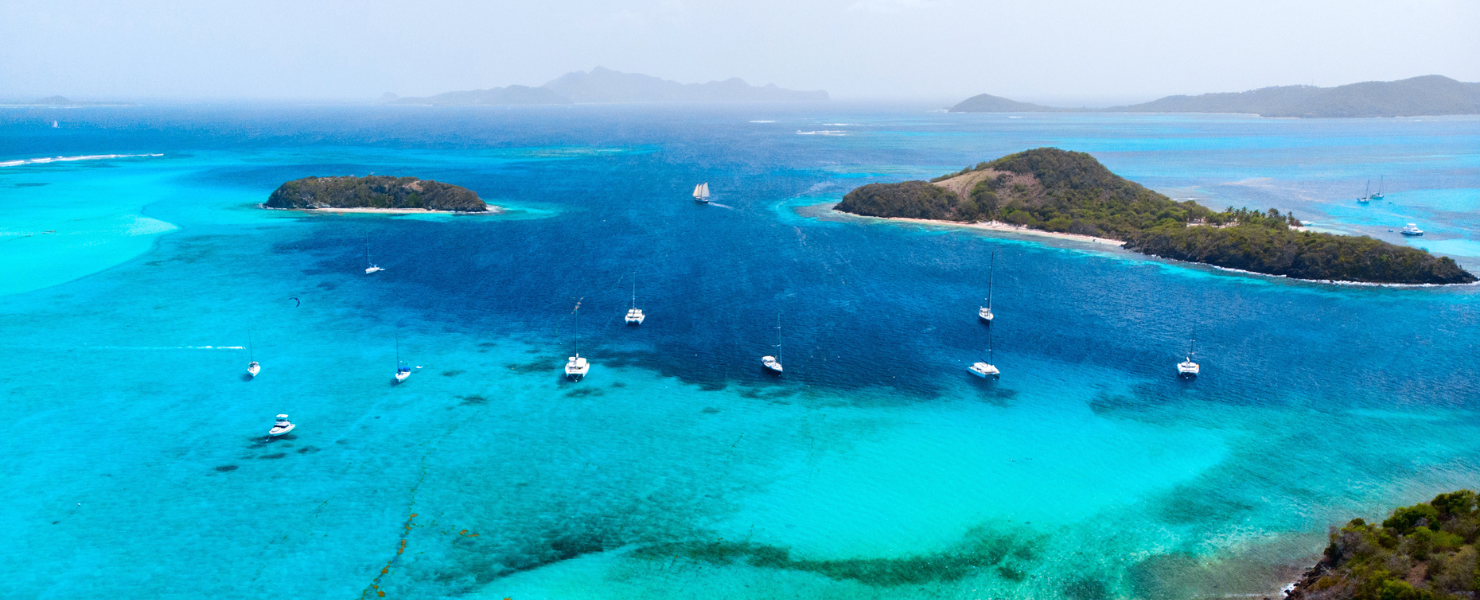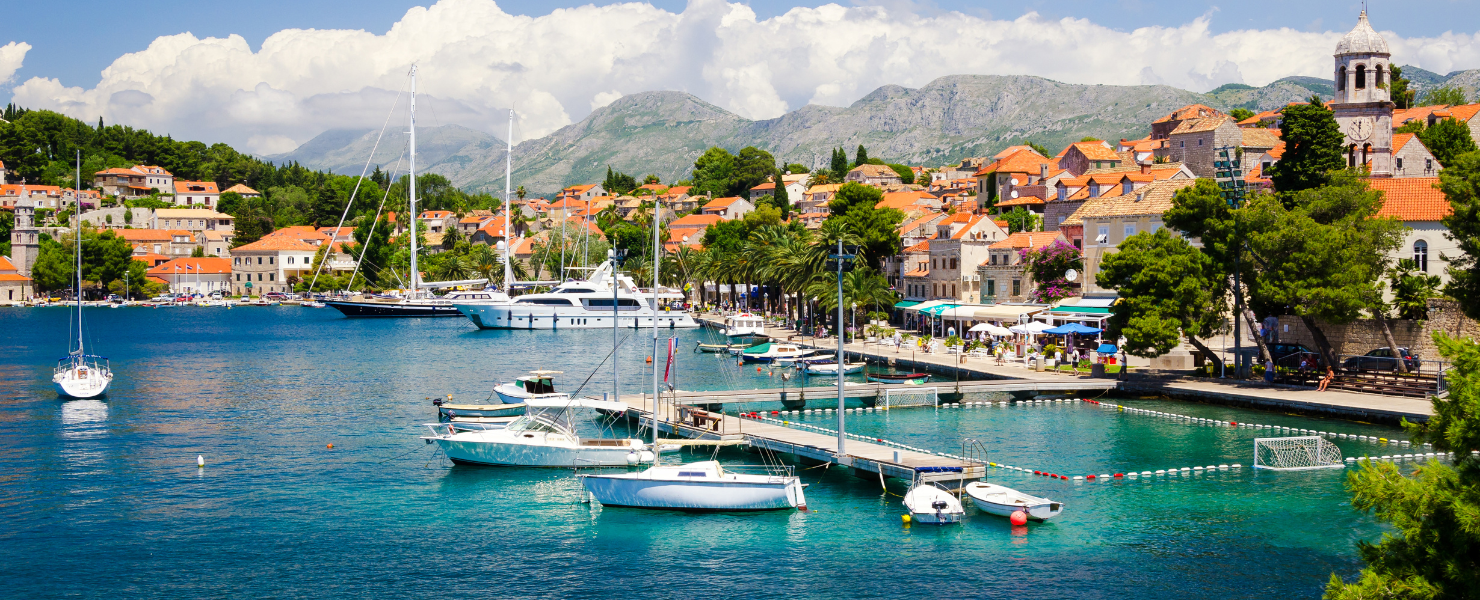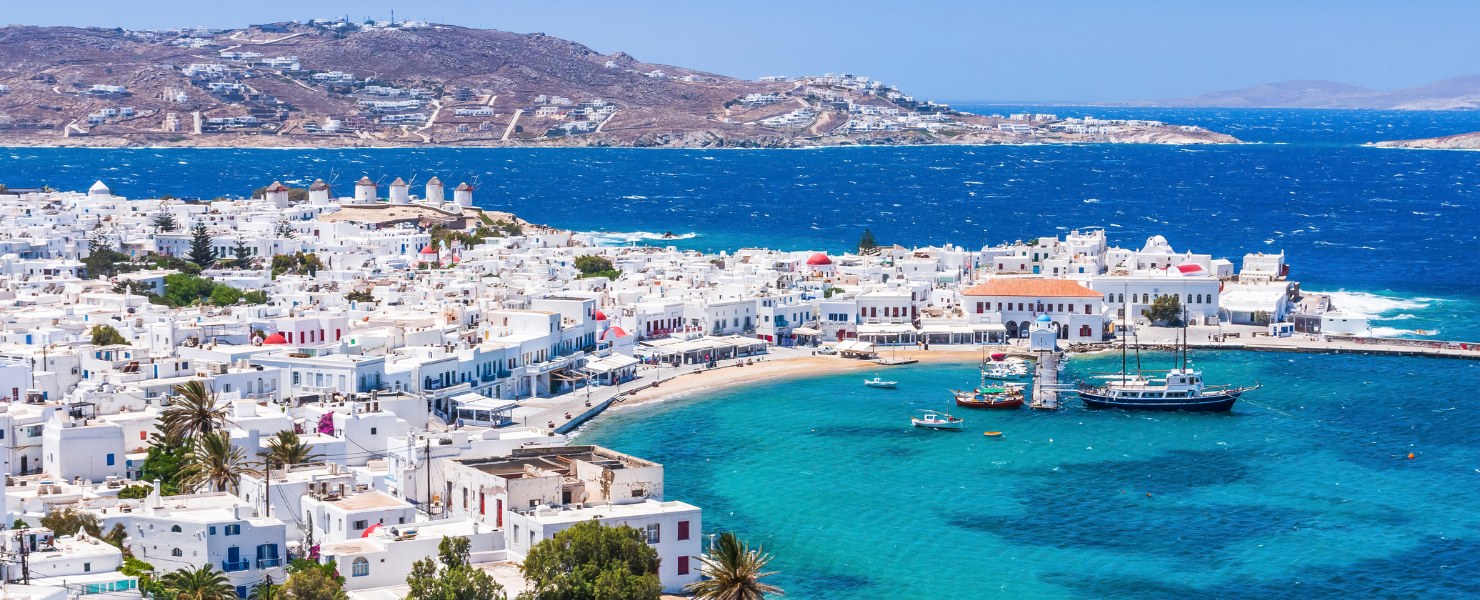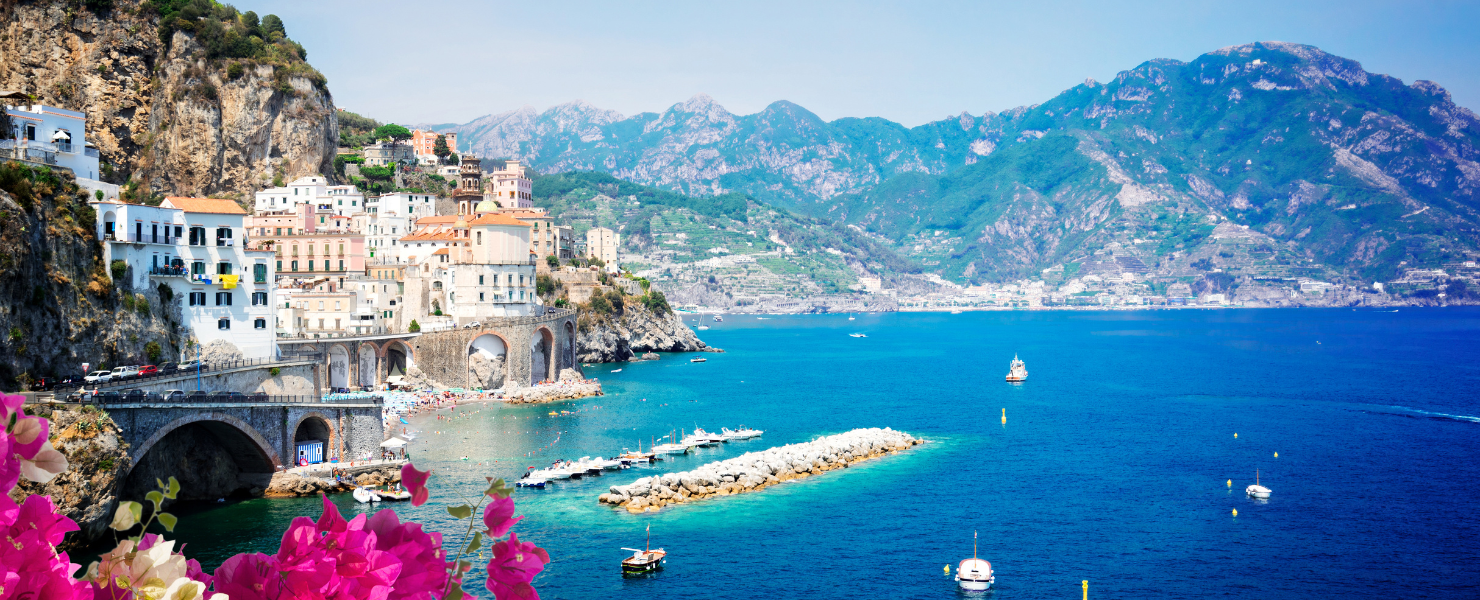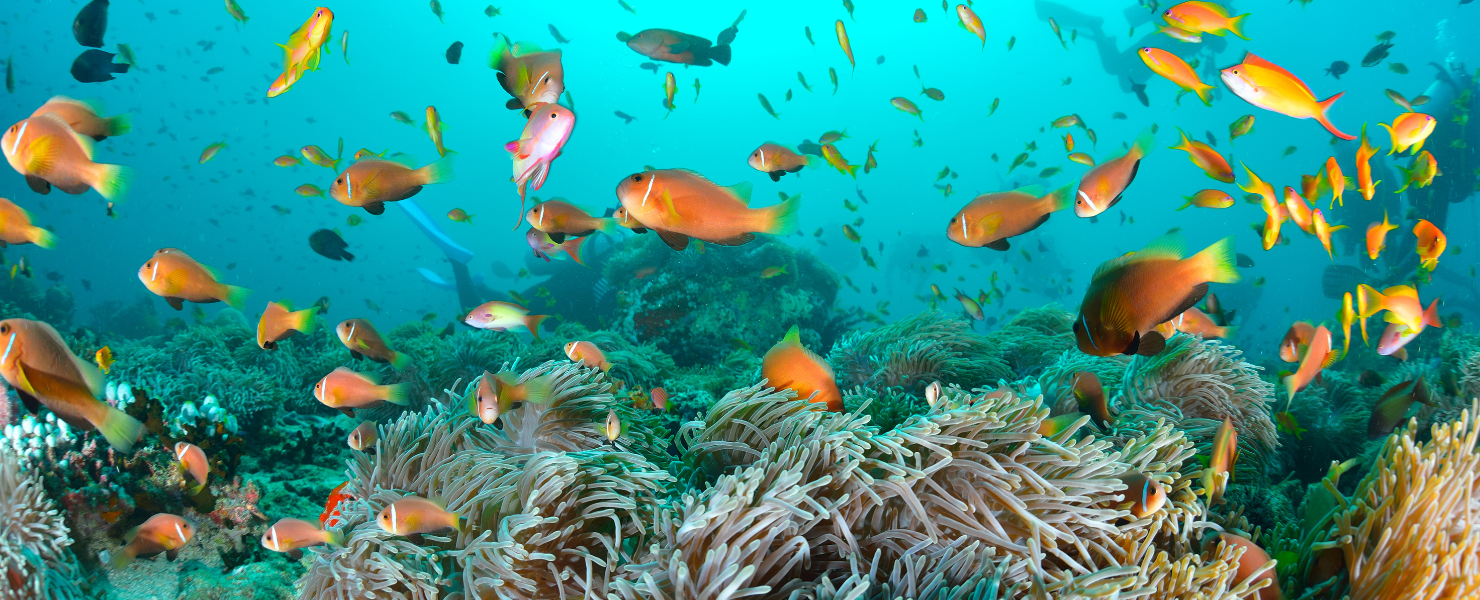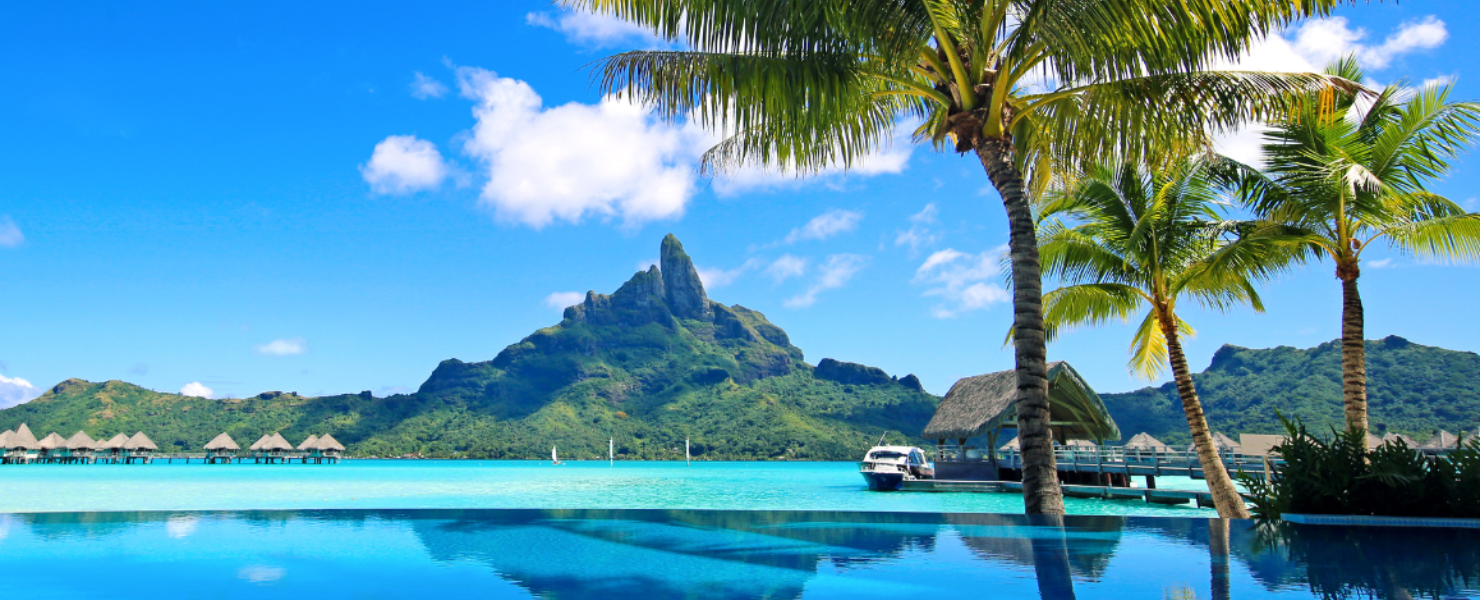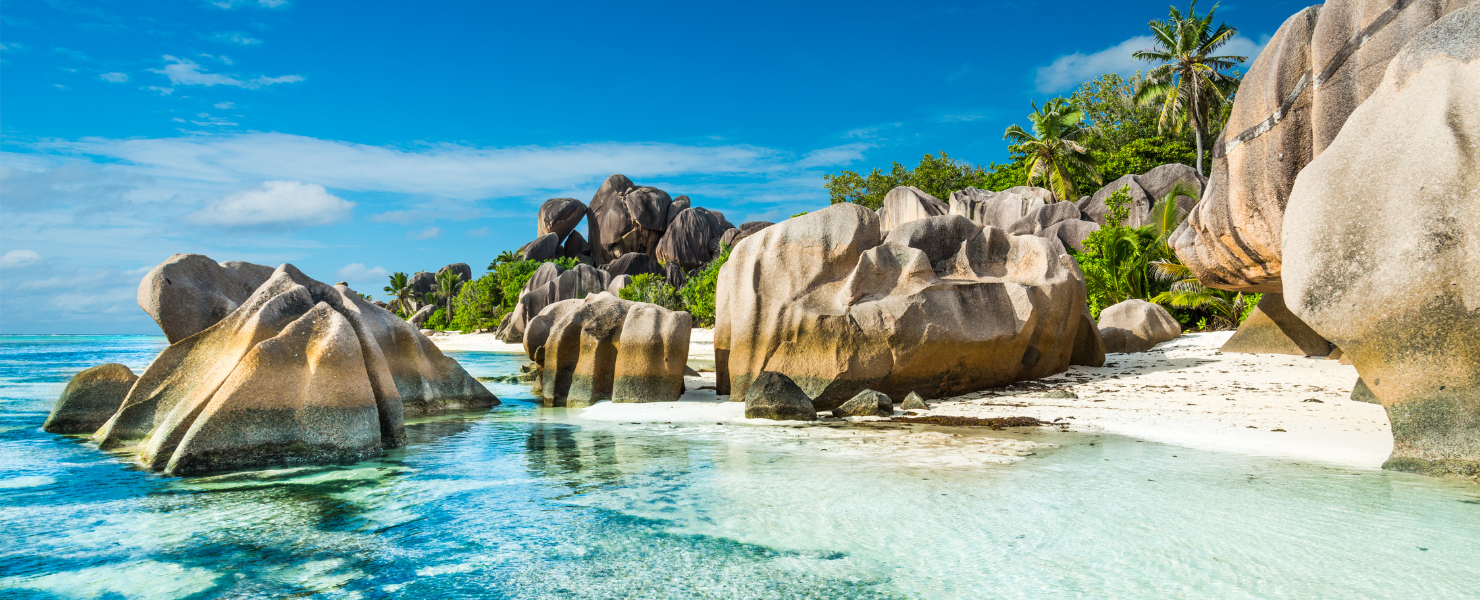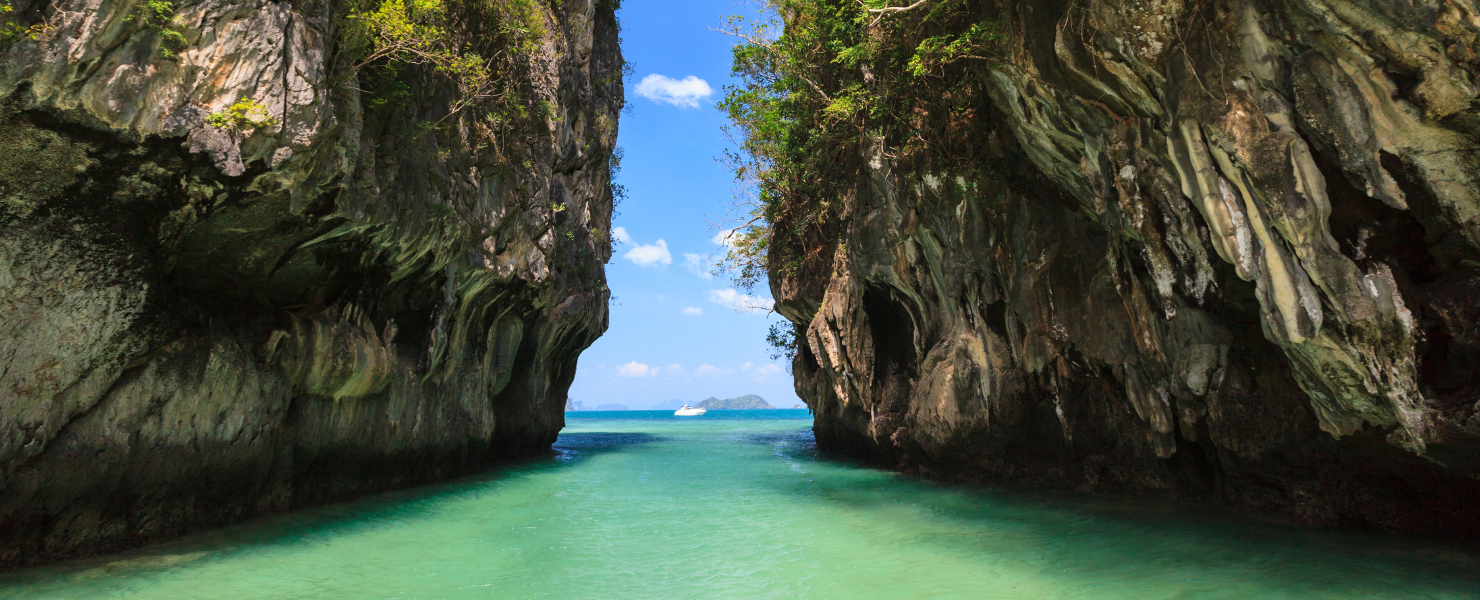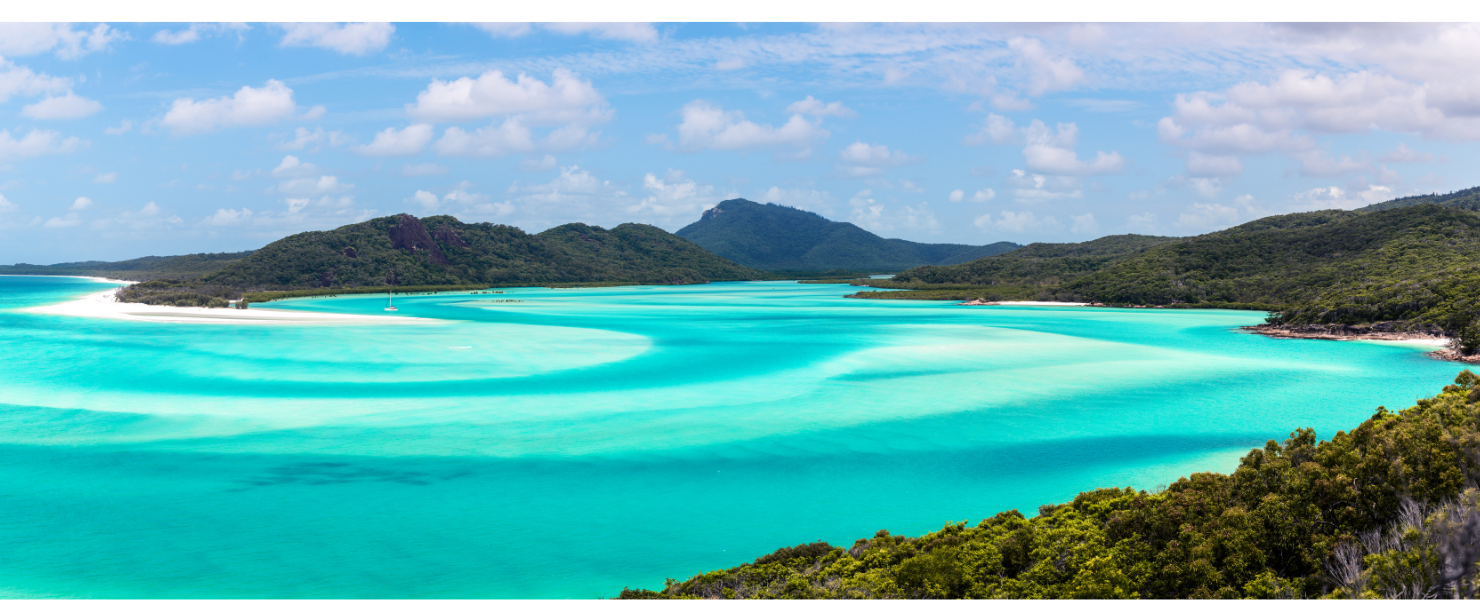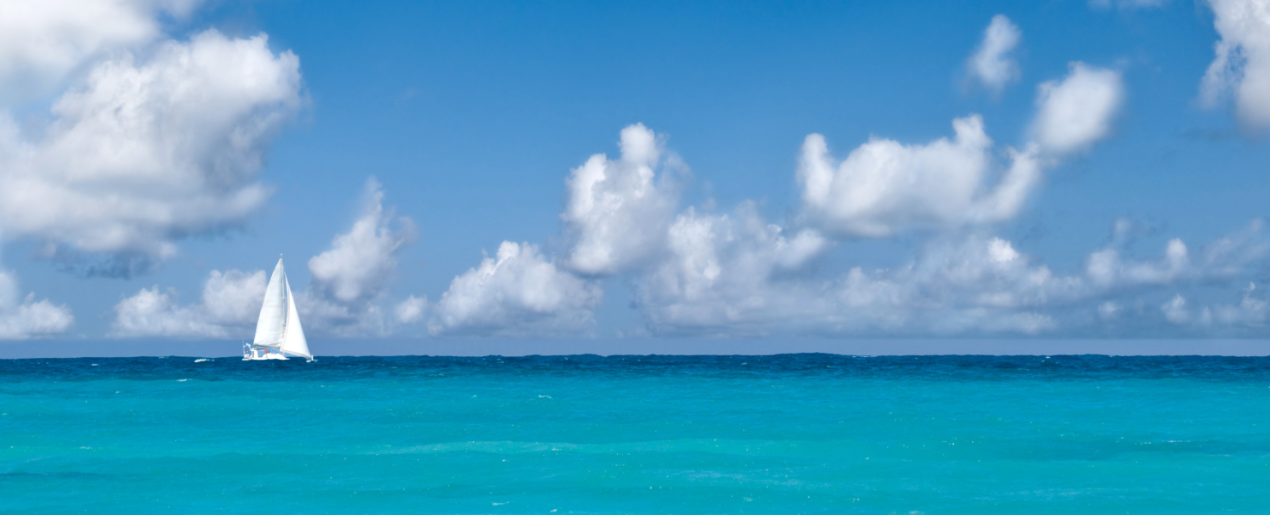
Exploring the world by sail offers an unparalleled sense of freedom and adventure, and choosing the right charter destination can make all the difference. From the sun-soaked shores of the Caribbean to the turquoise waters of the Maldives, each location has its own charm, sailing conditions, and prime time to visit. Whether you're dreaming of cruising the Greek Isles, island-hopping in Thailand, or navigating the pristine beauty of Polynesia, timing is key to making the most of your journey.
This guide will take you through some of the world’s top sailing destinations — Croatia, the Seychelles, Italy, and beyond — while providing insight into the best seasons to sail each region. Whether you're looking for calm seas, vibrant local culture, or perfect winds, we’ll help you chart the course to your next unforgettable sailing adventure.
To add a personal touch to these stunning destinations, two of our expert captains, Dave Russell and Jeff Cathers, will share their own thoughts and anecdotes. Having navigated many of these regions, they’ll offer invaluable advice on what makes each location special, from local culture and attractions to tidal and sailing conditions.
Some destinations provide additional recommended reading via links to our "Members Review Destinations" articles, which highlight the personal impressions of Modern members who have chartered there.
At the end of this article, you'll also find a bonus section! We've shared Dave's top 3 tips for new bareboat charterers and a list of informative articles to help you get prepared for your big adventure.
Not feeling ready to venture out on your own yet? Consider joining a Modern Sailing Global Destinations Flotilla to experience destination sailing with the comfort and enjoyment of expert support and camaraderie all around you. Our next destination is set amidst the idyllic West Indies Islands of St. Lucia and Martinique, April 2 to 12, 2025.
The table below provides a quick look at the destinations we'll cover in this article, the part of the world they are located in, the best time of year for sailing there, and whether or not the location is ideal for sailors who are new to bareboating abroad. Click on the destination to jump directly to the section that provides the details.
| DESTINATION | CONTINENT OR REGION / OCEAN OR SEA | BEST TIME OF YEAR FOR SAILING | RECOMMENDED FOR NOVICE BAREBOATERS? |
|---|---|---|---|
| The Caribbean | Middle America (subregion of North America) | December – April |
- Virgin Islands: Yes, Level 1. - Leeward & Windward Islands: Level 2. - Belize: No, Level 3. |
| Croatia |
Southeastern Europe / Adriatic Sea |
Late May – September |
No, Level 2 – requires skill at med mooring |
| Greece |
Southeastern Europe / Mediterranean Sea |
Late April – October |
No, Level 2 – requires skill at med mooring |
| Italy: Amalfi Coast, Aeolian Islands |
Southern Europe / Mediterranean, Tyrrhenian Sea |
Southern Europe / Mediterranean, Tyrrhenian Sea |
No, Level 2 – requires skill at med mooring |
| The Maldives |
Asia / North-central Indian Ocean |
November – April |
Yes, Level 1 |
| Polynesia: Fiji, Hawaii, Tahiti |
South Pacific Ocean |
April/May – October |
Tahiti and Fiji: No, Level 2 |
| The Seychelles |
East Africa / Indian Ocean |
April – October |
Yes, Level 1 |
| Thailand |
Southeast Asia / The Andaman Sea, Gulf of Thailand |
November – April |
Yes, Level 1 – similar tidal range to SF Bay |
| The Whitsunday Islands |
Australia, Queensland / Coral Sea, Great Barrier Reef |
May – October |
Yes, Level 1-2 |
The Caribbean
The best time to charter a sailboat in the Caribbean is from November to mid-December and late January to May, during the dry season. Late December to mid-January can sometimes experience strong “Christmas Winds” from the north, which make many of the bays, anchorages, and mooring fields very uncomfortable. Aside from that brief period, here’s why this destination is so high on any sailor’s bucket list:
- Ideal Weather: The dry season brings warm, sunny days with temperatures ranging from 25°C to 28°C (77°F to 82°F) and low humidity. It’s perfect for sailing, beach activities, and exploring the islands. The risk of rain is minimal, and the weather is generally stable.
- Steady Trade Winds: The Caribbean enjoys consistent northeast trade winds during this time, typically blowing at 15-20 knots. These winds create excellent sailing conditions, providing enough breeze for smooth passages while remaining manageable for most sailors.
- Calm Seas: The seas are generally calmer during the dry season, making it easier to sail between islands, especially across popular routes in areas like the British Virgin Islands, St. Lucia, and Grenada.
- Avoiding Hurricane Season: The hurricane season in the Caribbean runs from June to November, with the highest risk from August to October. Chartering during the dry season ensures a lower chance of encountering storms, making it a safer and more predictable time to sail.
- Festivals and Local Culture: The high season in the Caribbean coincides with many vibrant local festivals and events, such as Carnival in February or March and regattas like the St. Barths Bucket and Antigua Sailing Week. This provides a great opportunity to enjoy both sailing and local culture.
- Marine Life and Scenery: The dry season offers the best conditions for snorkeling and diving, with clear water and good visibility to explore the region’s coral reefs, marine parks, and abundant marine life.
While December to April is the peak season with the best weather, it's also the busiest and most expensive. For fewer crowds and better charter rates, consider sailing in the shoulder months of May and November. The weather is still favorable, but the region is quieter and more affordable.
Additional Reading
- Vincent Latour's US Virgin Islands Charter Experience
- The British Virgin Islands - Emre Colak's Charter Experience
- Caribbean Flotilla 2020 Highlights (Antigua, Barbuda, Guadeloupe)
Caribbean Notes/Anecdotes
DAVE RUSSELL —The Caribbean is a huge and wonderful sailor’s heaven, with many distinct regions, cultures, and adventures to explore. Much of it is relatively easy sailing, especially in the lee of the islands in the Eastern Caribbean, but with some spirited passages between the islands where the Atlantic Ocean meets the Caribbean Sea.
The tidal range is quite small (≤18 inches). The British Virgins Islands are always my recommendation for first-time charterers (Level 1). With its short distances between islands, moorings and good restaurants everywhere, the BVI is fully set up for chartering and their economy is dependent on us. The BVI has become so popular (and crowded during the winter holiday season and spring break) that an online service called BoatyBall was created allowing you to reserve mooring balls in most of the bays starting at 7:00am the morning of each day’s sail. Use it.
After mastering the BVI, consider sailing the eastern Caribbean (Level 2), anywhere from St. Martin in the north to Grenada in the south. Many companies offer one-way charters, so you can begin in, for example, Martinique, then sail one-way north to Dominica and disembark in Guadeloupe — instead of doing a round trip. Note that some of these itineraries will require visiting Customs and Immigration offices to clear out and in as you proceed from one island nation to another independent island nation.
The Western Caribbean off Central America, notably Belize, is also wonderful, with perhaps the best snorkeling and sea life anywhere inside the world’s second largest barrier reef. The sailing in Belize is more difficult due to very shallow water and many coral heads to avoid. There are few services available once you leave the charter base, so stock up your provisions in advance. I consider Belize a Level 3 (most difficult) destination.
JEFF CATHERS — The BVI is where bareboat chartering all began. Beautiful waters, with infamous bars (Soggy Dollar, Foxy’s), anchorages (Virgin Gorda Sound, Anegada, Cane Garden Bay). I highly recommend the BVI for first time bareboat charters. Belize is home to wonderful people with numerous islands and waters to explore.
Return to table of destinations.
Croatia
The best time to charter a sailboat in Croatia is from late May to September, with the peak season being in July and August. Here's a breakdown of why this period is ideal:
- Perfect Sailing Weather: From late spring through summer, Croatia enjoys warm, sunny days with moderate winds, perfect for smooth sailing. Winds like the Maestral, a gentle afternoon breeze, make for enjoyable and safe sailing conditions.
- Sea Conditions: The Adriatic Sea is calm and warm during these months, with sea temperatures ranging from 22°C (72°F) in June to around 26°C (79°F) in August, making it perfect for swimming, snorkeling, and other water activities.
- Scenic Beauty: During the summer months, the coastlines of Croatia are in full bloom, with lush greenery and vibrant flowers. The turquoise waters and picturesque islands are particularly stunning at this time.
- Festivals and Events: Croatia hosts a variety of cultural festivals, music events, and local celebrations throughout the summer, especially in coastal towns like Split, Hvar, and Dubrovnik, offering a lively atmosphere for visitors.
- Availability of Services: During the high season (July and August), marinas, restaurants, and tourist services are fully operational, offering a range of amenities and entertainment options.
For those looking for fewer crowds and lower prices, June and September are excellent alternatives, as the weather is still warm and ideal for sailing, but with fewer tourists and a more relaxed ambiance.
Additional Reading
Croatia Notes/Anecdotes
DAVE RUSSELL — Croatia, and the Mediterranean in general, offers a huge variety of cultures, history, ancient stone buildings, great food, and reasonably easy sailing among hundreds of islands and bays. I just love Croatia. The people are genuine, friendly, and the vast majority of them speak English very well. The food is fine, with fresh seafood, and I even had grilled wild boar on my most recent trip there in September 2024.
I consider Croatia (and all Mediterranean destinations) a Level 2 (sailing environment medium difficulty) because:
- the winds change direction frequently and can make some bays untenable; and
- skillful anchoring in bays with poor holding might be required, or stern-tying to a town quay (pronounced “key”) while attaching sunken mooring lines (lazy lines, or slime lines) to the boat is necessary.
- The technique is called "med mooring." This requires quite good slow-speed maneuvering skills in reverse, often with a cross-wind, and of course fenders deployed because you will be touching other boats on either side. You’ll need good line handlers to help you. My #1 Tip for sailing anywhere in the Med is to charter a boat equipped with a bow thruster if it’s a monohull, or if a catamaran, then be adept and twin-screw maneuvering.
Return to table of destinations.
Greece
The best time to charter a sailboat in Greece is between late April and October, with June to September being the most popular months. Here's why:
- Optimal Weather: During this period, the weather is warm, sunny, and consistent, with temperatures ranging from 24°C to 32°C (75°F to 90°F). Summer brings perfect conditions for sailing, swimming, and sunbathing, especially in the Greek islands.
- Ideal Wind Conditions: The winds in Greece vary by region, but the Aegean Sea experiences the Meltemi winds from July to August, which offer strong and steady winds (15-25 knots) for experienced sailors. In the Ionian Sea, conditions are typically calmer, with lighter winds (10-15 knots), ideal for leisurely sailing, especially in June and September.
- Scenic Beauty: The summer months reveal Greece's stunning landscapes in full bloom, with the crystal-clear waters of the Aegean and Ionian Seas, white-washed villages, and vibrant island life at their peak. These months are also ideal for exploring Greece’s many uninhabited islands and secluded coves.
- Festivals and Culture: Summer in Greece is rich with cultural events, local festivals, and music celebrations across the islands. Visiting during this time allows sailors to immerse themselves in the lively Greek culture while sailing between islands.
- Busy but Vibrant: July and August are the busiest months, especially in famous spots like Santorini and Mykonos, but they also bring a vibrant atmosphere. For a quieter experience with fewer tourists but still great weather, May, June, September, and early October are fantastic choices.
In particular, May, June, and September offer warm temperatures, lighter winds, fewer crowds, and lower prices for chartering, making them highly attractive for those seeking a more relaxed sailing holiday.
Additional Reading
- Sailing the Ionian Sea in Greece - Vincent and Julia's Experience
- Sailing Greece - Matt Coelho's Experience
Greece Notes/Anecdotes
DAVE RUSSELL — Greece, and the Mediterranean in general, offers a huge variety of cultures, history, ancient stone buildings, great food and reasonably easy sailing among hundreds of islands and bays. Ashore, learn the many different varieties of feta cheese, enjoy grilled octopus and other delicacies.
I call Greece and all Mediterranean destinations a Level 2 (medium difficulty) because:
- the winds change direction frequently and can make some bays untenable; and
- skillful anchoring in bays with poor holding might be required, or stern-tying to a town quay (pronounced “key”) while simultaneously lowering the anchor or tying the bow to a mooring ball is necessary.
- The technique is called "med Mooring." It requires quite good slow-speed maneuvering skills in reverse, often with a cross-wind, and of course fenders deployed because you will be touching other boats on either side. You’ll need a crew member on the bow who is skilled at anchoring, and line handler crew to help you at the stern. My #1 Tip for sailing anywhere in the Med is to charter a boat equipped with a bow thruster if it’s a monohull, or if a catamaran, then be adept at twin-screw maneuvering.
Return to table of destinations.
Italy: Amalfi Coast and Aeolian Islands
The best time to charter a sailboat along Italy's Amalfi Coast and Aeolian Islands is from May to September, with June to early September offering the best sailing conditions. Here's why:
- Weather:
- From May to September, both the Amalfi Coast and Aeolian Islands enjoy warm, sunny weather with temperatures ranging from 22°C to 30°C (72°F to 86°F). This Mediterranean climate is ideal for sailing, swimming, and outdoor activities.
- May and June provide slightly cooler temperatures and fewer crowds, while July and August are the hottest months, perfect for sunbathing and water sports.
- Wind and Sea Conditions:
- June to September offers the most stable sailing conditions, with light to moderate winds (typically 10-20 knots) and calm seas, making it ideal for both experienced and novice sailors.
- The Aeolian Islands, located in the Tyrrhenian Sea, benefit from gentle northeast trade winds during this period, while the Amalfi Coast experiences steady breezes perfect for smooth sailing between picturesque towns.
- Scenic Beauty:
- The dramatic cliffs and picturesque villages of the Amalfi Coast (like Positano, Amalfi, and Ravello) are best enjoyed in the late spring and summer months when the scenery is in full bloom and the water is clear for swimming and snorkeling.
- The Aeolian Islands (Stromboli, Lipari, Salina) are renowned for their volcanic landscapes, crystal-clear waters, and beautiful anchorages, which are most accessible during these months.
- Local Festivals and Culture: The summer months, particularly July and August, are filled with cultural events, local festivals, and regattas along the Amalfi Coast and in the Aeolian Islands. This vibrant atmosphere adds an extra layer of charm to your sailing experience. In August, you'll find festivals celebrating the local cuisine, wine, and traditions in both regions, offering a unique chance to connect with local culture.
- Swimming and Snorkeling: The sea temperature is ideal for swimming, snorkeling, and diving, especially in July and August when the water reaches its warmest point (around 26°C/79°F). Both regions offer beautiful marine life and opportunities for underwater exploration.
- Avoiding Crowds: May, June, and September are the best months for those looking to avoid the busy tourist season. These shoulder months offer excellent sailing conditions, pleasant weather, and fewer crowds in marinas and popular tourist spots, along with slightly lower charter prices compared to the peak summer season.
For the Amalfi Coast and Aeolian Islands, June to September provides the best combination of ideal weather, calm seas, and local culture, while May and September offer a more tranquil experience with fewer crowds.
Additional Reading
- Sailing the Aeolian Islands of Italy - Steve Fillipow's Experience
- Sail Italy 2022 Flotilla Photo Journey (Amalfi Coast)
Return to table of destinations.
The Maldives
The best time to charter a sailboat in the Maldives is from November to April, during the dry northeast monsoon season. Here’s why this period is ideal:
- Optimal Weather: November to April is the dry season in the Maldives, characterized by warm, sunny weather with temperatures ranging from 26°C to 32°C (79°F to 89°F). This period provides consistent sunshine and minimal rainfall, perfect for sailing and enjoying outdoor activities.
- Favorable Winds: During this time, the Maldives experiences the northeast trade winds, which are gentle and steady, typically blowing at 10 to 15 knots. These winds are ideal for sailing, providing a comfortable and enjoyable experience on the water.
- Calm Seas: The dry season brings calm seas, which are ideal for smooth sailing between the atolls and islands. The reduced likelihood of heavy rainfall and storms during this period contributes to more stable sea conditions.
- Excellent Marine Life and Visibility: The clear waters of the Maldives are at their best during the dry season, with excellent visibility for snorkeling and diving. You’ll have the chance to see vibrant coral reefs, diverse marine life, and even manta rays and whale sharks.
- Avoiding the Wet Season: The wet season, from May to October, is characterized by the southwest monsoon, which brings higher humidity, more frequent rainfall, and the possibility of storms. While the wet season can still be warm and offer some good sailing conditions, it is less predictable and can lead to rougher seas and reduced visibility.
- Tourist Season: The dry season is also the peak tourist period in the Maldives, meaning more services and amenities are available. However, if you prefer fewer crowds, November and April are shoulder months that still offer great weather but with fewer tourists compared to the peak months of December to March.
For the best sailing conditions in the Maldives, November to April is the optimal time, with November, December, and April being particularly favorable for avoiding the peak crowds while still enjoying excellent weather and sea conditions. This period ensures smooth sailing, calm seas, and superb underwater visibility, making it ideal for exploring the stunning atolls and marine life of the Maldives.
Maldives Notes/Anecdotes
DAVE RUSSELL — To say the Maldives is superb is an understatement. This region has some of the richest sea life of anywhere I’ve been. Snorkeling is the total submerged colorful experience of colorful healthy coral and some of the larger fish and manta rays I’ve ever encountered. Sailing inside the protected lagoons is generally benign.
Return to table of destinations.
Polynesia
The best time to charter a sailboat in Polynesia—covering areas like Tahiti (French Polynesia), Fiji, and Hawaii—varies slightly across each region, but the overall ideal period is between May and October, during the dry season.
Fiji
The best time to charter a sailboat in Fiji is from May to October, during the dry season. Here's why:
- Optimal Weather: From May to October, Fiji experiences its dry season, characterized by sunny days, lower humidity, and cooler temperatures, ranging between 22°C and 28°C (72°F to 82°F). This makes for comfortable sailing conditions, both on and off the water. The skies are clear, and there is little rainfall, perfect for sailing between the islands and enjoying outdoor activities.
- Steady Winds and Calm Seas: During this period, Fiji benefits from steady southeast trade winds, which blow consistently at 10 to 20 knots, providing ideal sailing conditions. The seas are generally calm, making navigation easier, especially around the beautiful outer islands and coral reefs, ensuring smooth sailing and comfortable anchoring.
- Clear Waters for Snorkeling and Diving: The clear, calm waters of the dry season offer excellent visibility for snorkeling and diving. You can explore Fiji's famous coral reefs, including the Great Astrolabe Reef, with an abundance of marine life such as colorful fish, manta rays, and turtles.
- Fewer Cyclones: The cyclone season in Fiji typically runs from November to April, so chartering a sailboat during the dry season (May to October) significantly reduces the risk of encountering tropical storms, making it a safer time to sail.
- Cooler Nights: The dry season also brings cooler nights, offering more comfortable sleeping conditions on the boat, as the humidity is lower compared to the wet season.
- Festivals and Local Culture: June to August is a lively time in Fiji, with many local festivals and cultural events happening across the islands, adding an extra layer of excitement to your sailing experience.
- Peak Sailing Season: Fiji is most popular with sailors during the dry season, as this period offers the best combination of favorable weather, calmer seas, and steady winds. However, the islands are spread out, and even during peak times, you can still find serene, uncrowded anchorages.
For the best overall experience in Fiji, chartering a sailboat between May and October ensures the ideal combination of perfect weather, stable winds, clear seas, and safety from cyclones, allowing you to fully enjoy Fiji’s stunning marine environment and island culture.
Hawaii
The best time to charter a sailboat in Hawaii is from April to October, coinciding with the best weather and sailing conditions. Here’s why:
- Optimal Weather: During these months, Hawaii experiences its drier season with lower chances of rain, providing consistent sunny weather. Temperatures are warm, ranging from 24°C to 31°C (75°F to 88°F), which is ideal for sailing and enjoying various water activities.
- Steady Trade Winds: April to October brings steady trade winds, which are predictable and generally range from 10 to 25 knots. These winds are not only pleasant for sailing but also help to keep the climate comfortably cool, enhancing your time on deck.
- Calm Seas: The sea conditions are typically calmer during these months, particularly important in the Pacific where ocean swells can be a challenge. Calmer seas make for smoother sailing and safer conditions for anchoring near Hawaii's beautiful beaches and coves.
- Low Rainfall: The lower rainfall during these months ensures more sunny days and clear skies, which are perfect for sailing and exploring the islands’ natural beauty from the water.
- Wildlife and Marine Life: This period is also a great time for wildlife enthusiasts. While the humpback whale season from December to March is over, the waters around Hawaii still offer abundant marine life, including dolphins, sea turtles, and colorful fish, which are vibrant and visible due to the clear waters.
- Avoiding the Busier Winter Season: By sailing between April and October, you’ll miss the busier tourist season which peaks from mid-December to March. This means fewer crowds at popular destinations and more availability for moorings and services.
- Festivals and Cultural Events: The summer months in Hawaii are filled with cultural festivals and events, including King Kamehameha Day in June and the Aloha Festivals which peak in September. These events offer a rich glimpse into Hawaiian culture, enhancing your sailing trip.
April to October in Hawaii offers the best combination of good weather, steady winds, and calm seas, making it the ideal time for sailing. Whether you’re looking to explore the islands, engage in aquatic sports, or simply enjoy the serene Hawaiian atmosphere, these months provide the optimal conditions for a memorable sailing adventure.
Tahiti
The best time to charter a sailboat in Tahiti is during the dry season, from May to October. This period, also known as the Austral winter, offers ideal conditions for sailing and enjoying the islands. Here's why:
- Perfect Weather: During the dry season, Tahiti experiences pleasant weather with lower humidity, cooler temperatures (around 24°C to 28°C or 75°F to 82°F), and less rainfall. The sunny days and mild trade winds create comfortable sailing conditions.
- Reliable Winds: The southeast trade winds, known as the "Mara'amu", blow consistently during this season, usually around 10-20 knots. These winds make for enjoyable, steady sailing, especially around the Society Islands, including Bora Bora, Moorea, and Huahine.
- Calm Seas and Clear Water: The dry season brings calm seas and clear, turquoise waters, ideal for anchoring in lagoons, snorkeling, and diving. The visibility underwater is excellent, offering the chance to explore Tahiti's vibrant coral reefs and marine life.
- Avoiding the Cyclone Season: Tahiti's wet season, from November to April, is marked by higher temperatures, frequent rain showers, and the risk of tropical storms or cyclones. Chartering during the dry season allows you to avoid these potential disruptions.
- Marine Life and Scenery: The dry season is a great time to spot marine life, including dolphins, manta rays, and humpback whales, especially from August to October. The natural beauty of Tahiti’s islands, with their lush green mountains and stunning beaches, is at its most vibrant during this time.
For those seeking fewer crowds and better charter rates, May, June, and October are excellent shoulder months. They offer many of the same benefits as the peak season but with more tranquility and fewer tourists.
Polynesia Notes/Anecdotes
DAVE RUSSELL — The islands of Tahiti are indeed mystical, beautiful, and fine blend of Polynesian people and culture with a French influence (which certainly adds to the great quality of the food). Ashore at restaurants, you will be encouraged to dance with the locals, be shown how to do some of their incredible moves, and dine on fantastic fresh fish, poisson cru, local fruit and produce, and sample Tahitian vanilla, a sweeter varietal that grows only on these islands.
Distances between islands is about 20 nautical miles over the nearly two-mile deep Pacific Ocean. The tidal range is small (≤18 inches). Piloting within the lagoons inside the coral reefs that surround every island, and the passes through the reefs make this destination a Level 2. Helping you are the best ATONs I’ve ever encountered, as passes are well marked using the IALA-A system (Green Right Returning - the opposite of USA) and Cardinal Marks inside the lagoon to indicate how to avoid coral heads.
Winds generally come from east, but can change 90° to 180°, so your vacation planning should accommodate an itinerary for sailing northwest to Bora Bora from the charter base (usually on Raiatea) or east to Huahine. Let the wind dictate Plan A or Plan B. Charter companies give you a printed weather forecast.
Boat-wise, I prefer catamarans in Tahiti, as their shallow draft is a real asset when anchoring, often in less than 6 feet of water. Some Tahitian islands offer mooring balls - Bora Bora is mooring only - but you should plan on anchoring at about half of your stops on the other islands.
JEFF CATHERS — Tahiti is my favorite place to charter on the planet, Huahine Island, Baie d’Auea to be exact. Bora Bora has amazing sea life. The people are friendly people and the sailing between islands is fantastic.
Return to table of destinations.
The Seychelles
The best time to charter a sailboat in the Seychelles Islands is from April to October. Here's why this period is ideal:
- Optimal Weather: During April to October, the Seychelles experiences its dry season, characterized by warm temperatures ranging from 24°C to 30°C (75°F to 86°F). This period offers sunny, stable weather, making it perfect for sailing, swimming, and outdoor activities. April and May are particularly pleasant as the temperatures are comfortably warm, and the humidity is relatively low, transitioning into the cooler and drier months of June to October.
- Favorable Winds: April to October aligns with the southeast trade winds, which blow consistently from around 10 to 20 knots. These winds create ideal sailing conditions, particularly for exploring the inner and outer islands of the Seychelles. The winds during this period are generally steady, making navigation smooth and enjoyable for both experienced sailors and those less familiar with the area.
- Calm Seas: The dry season offers calm seas, with minimal rain and reduced risk of rough weather. This is ideal for easy sailing between the islands and for enjoying activities like snorkeling and diving in the clear, warm waters.
- Marine Life and Visibility: The clear waters and good visibility during these months make it an excellent time for snorkeling and diving. The vibrant coral reefs and diverse marine life are easily observable, providing a rich underwater experience.
- Avoiding the Wet Season: The wet season, from November to March, brings higher humidity, increased rainfall, and the risk of cyclones, particularly from January to March. Chartering during the dry season helps avoid these potential weather disruptions and ensures a more stable and pleasant sailing experience.
- Tourist Season: April to October is also when the Seychelles sees its peak tourist season, which means more services and amenities are available. While July and August are the busiest months, April, May, and October provide a balance of good weather and fewer crowds, which can be ideal for a more relaxed experience.
For the best overall sailing conditions in the Seychelles, April to October is the optimal time, with April, May, and October offering particularly pleasant weather and fewer tourists. This period ensures smooth sailing, calm seas, and excellent conditions for enjoying the stunning marine environment and natural beauty of the islands.
Seychelles Notes/Anecdotes
DAVE RUSSELL — The Seychelles are spread over a large area of the Indian Ocean, but the islands you charter around are small and close together. Each offers a uniquely beautiful vibe, scenery and plant life. Being located just south of the equator, the winds in the Seychelles are generally light, and can come from either east or west, so you should always have an itinerary with a Plan B to anchor on a lee shore regardless of the wind direction.
Return to table of destinations.
Thailand
The best time to charter a sailboat in Thailand is during the dry season, from November to April, with peak conditions in December to March. Here's why this period is ideal
- Favorable Weather: The dry season brings sunny skies, warm temperatures (around 25-30°C or 77-86°F), and minimal rainfall, making it perfect for sailing and other outdoor activities. The weather is more predictable and stable compared to the monsoon season.
- Calm Seas and Ideal Winds: During this time, the northeast monsoon brings steady, gentle winds, typically ranging from 10 to 20 knots, creating excellent sailing conditions. The seas are calm and clear, making navigation easier and more enjoyable.
- Perfect for Island-Hopping: Thailand's islands, such as those around Phuket, Krabi, and the Phi Phi Islands, are most accessible during the dry season. The calm waters and clear skies allow for easy exploration of hidden coves, stunning beaches, and vibrant coral reefs.
- Diving and Snorkeling: The crystal-clear waters during this season make for ideal snorkeling and diving conditions. Marine life is abundant, and underwater visibility is at its best, especially in places like the Similan and Surin Islands.
- Festivals and Events: The dry season coincides with several Thai festivals, such as Loy Krathong in November and Songkran in April, offering unique cultural experiences along with your sailing adventure.
For those looking for fewer crowds, November and April are great alternatives. These shoulder months still offer favorable sailing conditions but with fewer tourists and often lower prices.
Thailand Notes/Anecdotes
DAVE RUSSELL — The islands of Thailand in the Andaman Sea have a tidal range of about 6 feet, so plan accordingly for your overnight anchorages. Much of the area is in estuarial water like San Francisco Bay, so visibility is limited and snorkeling not very good. There are many hongs to explore, which are essentially small islands with cave entrances and no top – a-must do dinghy ride. The popular beaches can get busy with tourists from the mainland delivered in long-tail boats, and food boats serve great Thai food for a wade-up dining experience. It’s like no other charter experience in many ways - best to go with an open mind.
Return to table of destinations.
The Whitsundays
The best time to charter a sailboat in the Whitsundays is during the Australian winter and spring months, from May to October. This period offers optimal sailing conditions and a pleasant climate. Here’s why:
- Perfect Weather: The Whitsundays enjoy mild, sunny weather during this time, with daytime temperatures ranging from 22°C to 27°C (72°F to 81°F). Humidity is lower, and rainfall is minimal, making it comfortable for sailing and exploring the islands.
- Steady Winds: From May to October, the southeast trade winds blow consistently at 10-20 knots, providing ideal sailing conditions without being too intense for most sailors. These winds make navigating the islands smooth and enjoyable.
- Clear Seas and Visibility: The calm seas and clear waters during this time are perfect for swimming, snorkeling, and diving. Visibility is excellent, allowing you to fully appreciate the Great Barrier Reef's vibrant marine life and coral formations.
- Avoiding Stinger (Jellyfish) Season: The warmer months, from November to April, bring the risk of jellyfish (marine stingers), particularly the dangerous box jellyfish and Irukandji. From May to October, stinger risks are significantly reduced, making swimming and water activities safer without the need for protective suits.
- Whale Watching: One of the highlights of chartering in the Whitsundays from June to September is the chance to see humpback whales as they migrate through the region. It's an incredible experience to witness these majestic creatures in their natural habitat.
- Low Chance of Cyclones: The cyclone season in the Whitsundays typically runs from November to April, so chartering from May to October reduces the risk of encountering severe weather, ensuring a safer and more relaxed sailing experience.
For fewer crowds and slightly cooler temperatures, May and September/October are excellent shoulder months. They still offer great sailing conditions but with more solitude and often lower charter prices.
Additional Reading
Return to table of destinations.
BONUS SECTION!
Captain Dave Russell’s Top Three Tips for Overseas Chartering
- Get a chart plotter app for your cell phone on iPad. Navionics, iNavX and Navily all receive well-deserved positive reviews. Compared to the chart plotters on most charter boats, the apps are easier to use, offer higher resolution and more detail in many important ways, such as water depth, hazards, etc. And conveniently, some show local restaurants at each destination, complete with phone numbers, websites and reviews - so handy when making reservations for dinner and overnight moorings or berths. Whatever one you choose, familiarize yourself with it’s features and functions before you travel.
- Especially for first time charters, get a second boat hook. You can’t appreciate how useful it is, and how much you will miss it, until it goes overboard in a mooring attempt that didn’t go as planned. Offering a dock worker $20 will usually produce a second boat hook in minutes.
- An International Proficiency Certificate is required to charter a boat in the Mediterranean. They are available for $99 from the ASA after you’ve successfully completed your ASA 104, Bareboat Cruising course, and are valid for five years. At check-in with the charter company, you will be asked to show this credential. Simply showing your ASA logbook with a signed-off ASA 104 BBC course completion is insufficient. Other overseas destinations will likely require you to submit a satisfactory resumé well before the charter start date.
Sailing and Charter Tips
Here is a collection of some of our top Member Resources articles geared to help prepare you for your first overseas bareboat charters. While written with Modern Sailing charterers in mind, these tips can be applied to almost bareboat charter situation.
- Setting Sail for Big Adventures: Three Ways to Prepare for Epic Voyaging
- Anchor and Windlass Tips
- Managing Water Use on a Multi-day Sailing Expedition
- Onboard Electricity Basics & FAQ
- Marine Battery and Power Management Basics
- Charter Boat Icebox and Refrigerator Basics and Best Practices
- Demystifying the Outboard Motor: A simple troubleshooting guide
- Common Sailing Injuries and How to Prevent Them
- 10 Tips to Prevent and Remedy Seasickness
- Three Light Wind Sailing Tips
- Four Essential Sail Care Tips for Charterers
- Bow Thruster Basics
- Docking a Dual Rudder Sailboat
- Sailing With Lazy Jacks and Stack Packs
- The Ins and Outs of In-Mast Furling Mainsails
- The Crew Briefing - An Essential Pre-Sail Safety Practice
